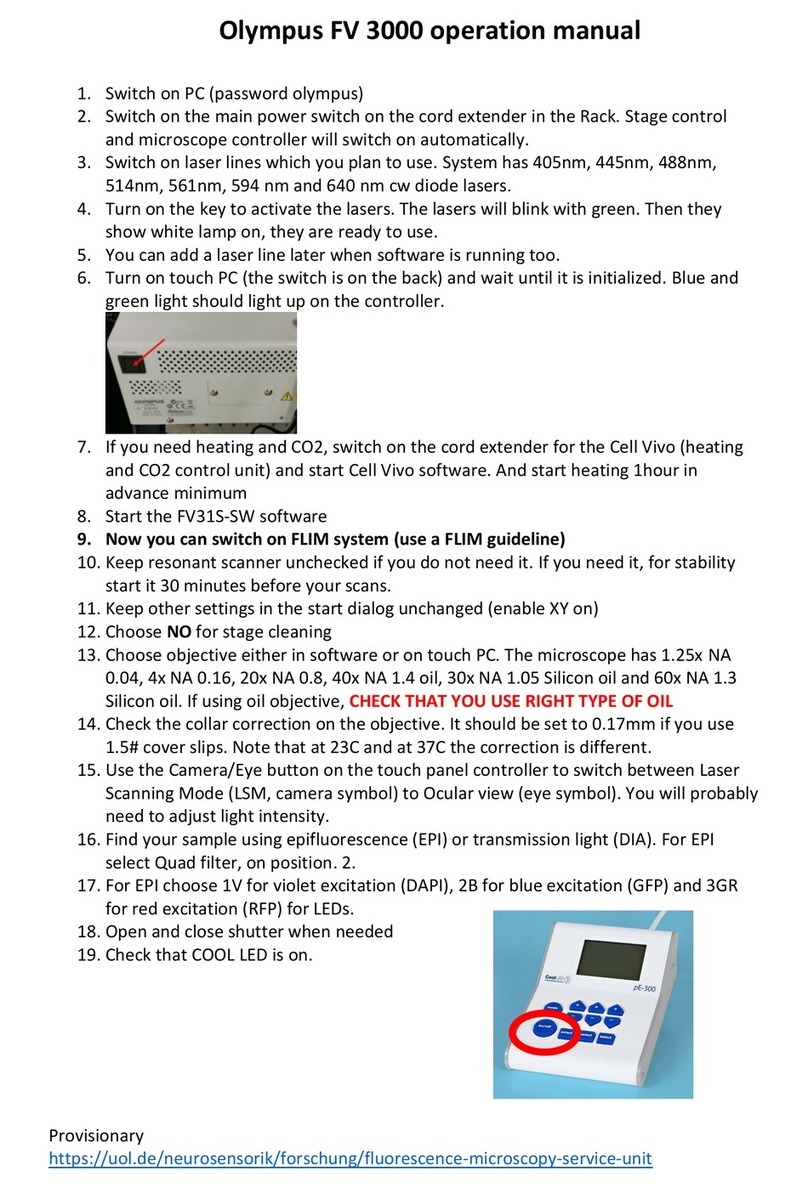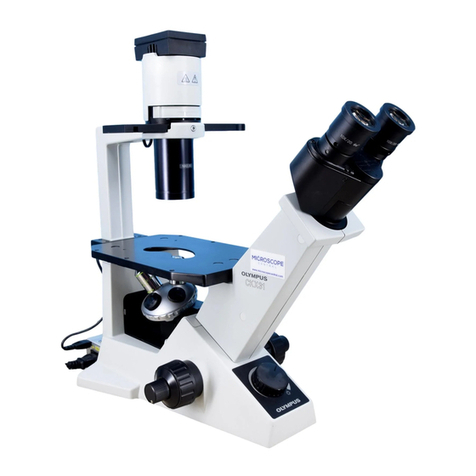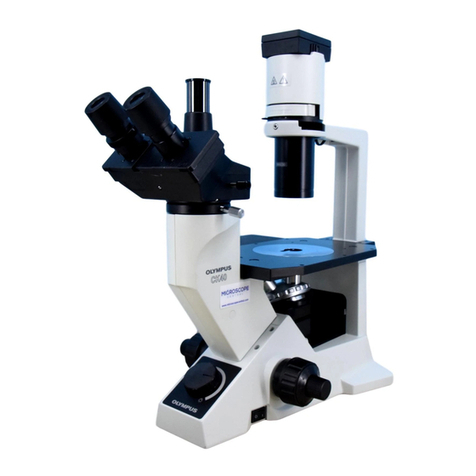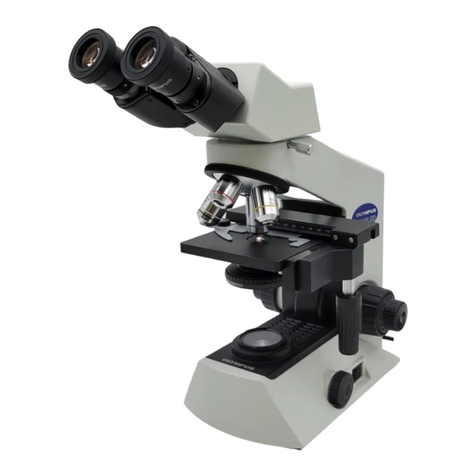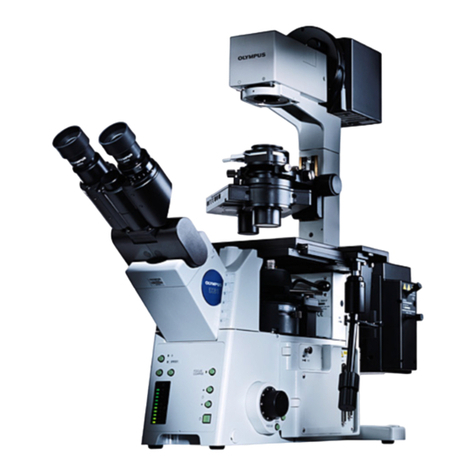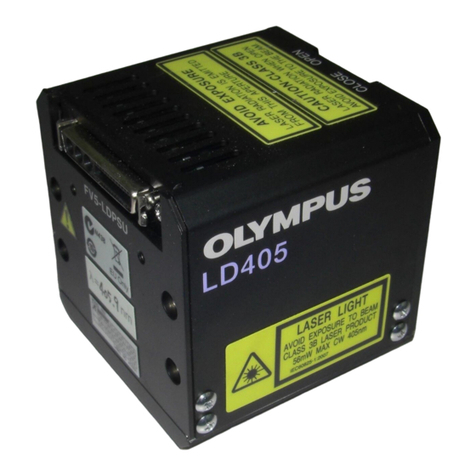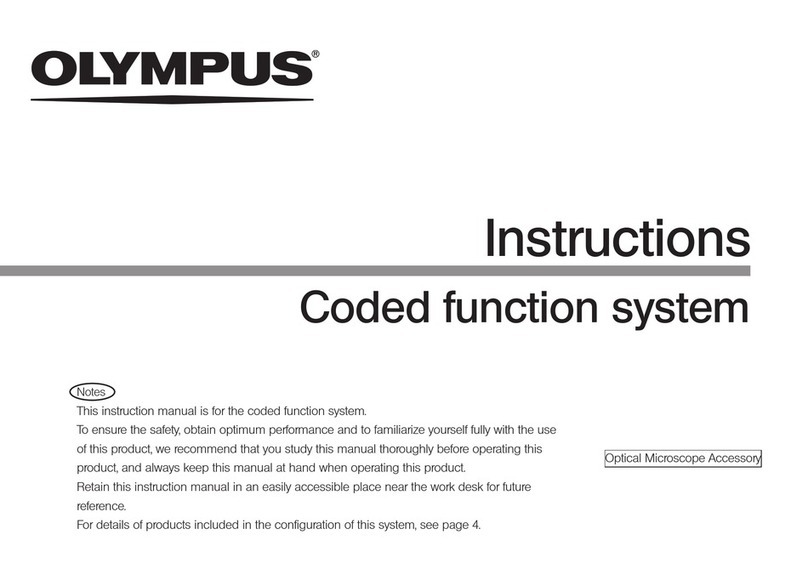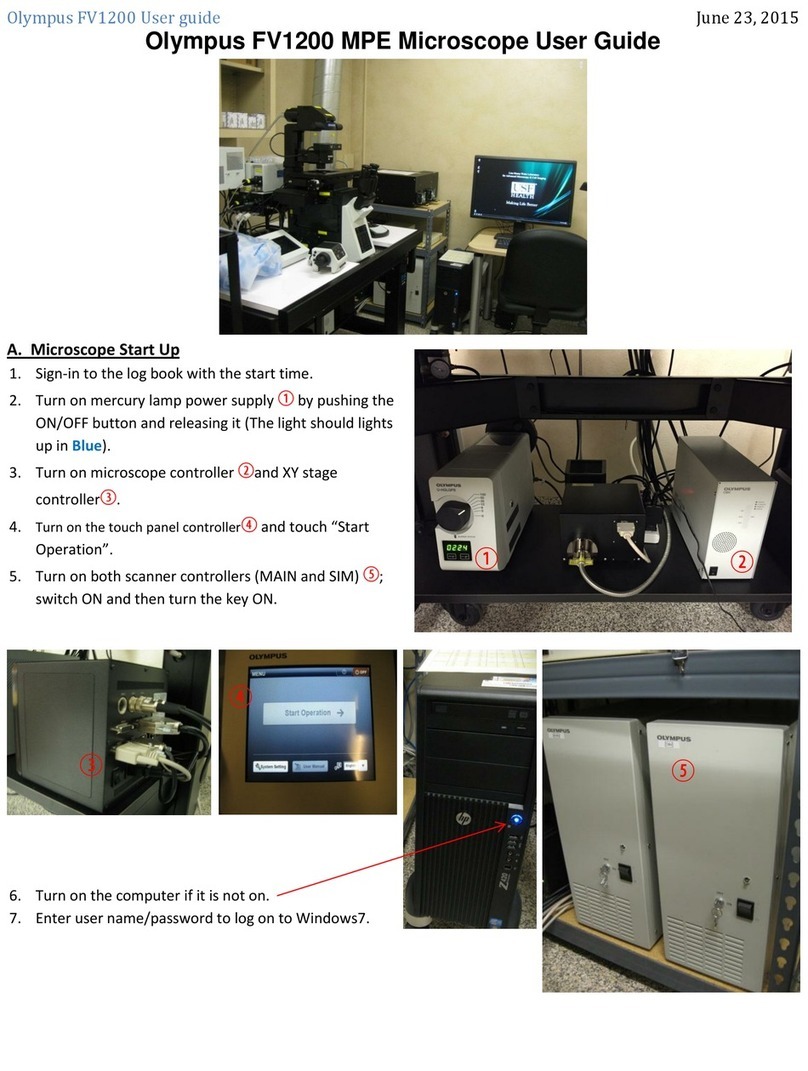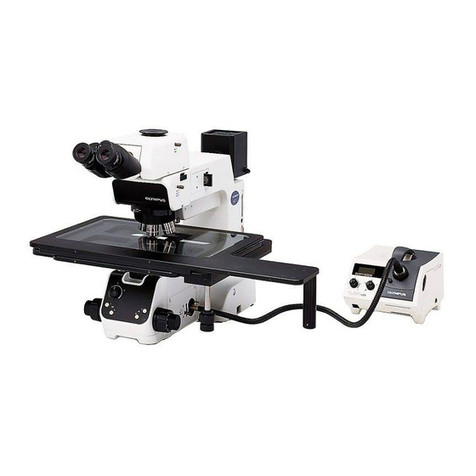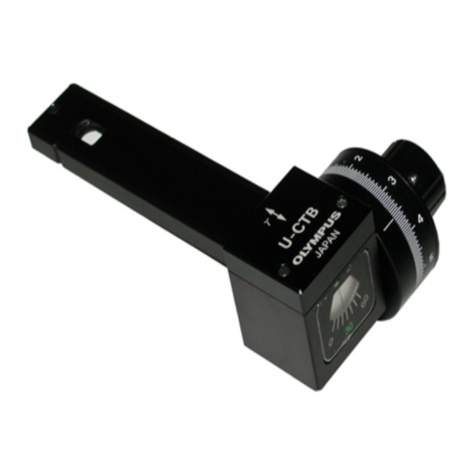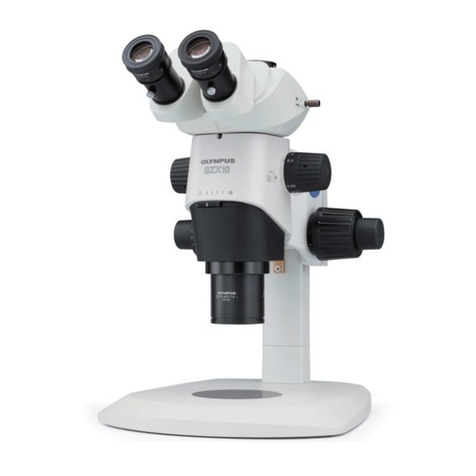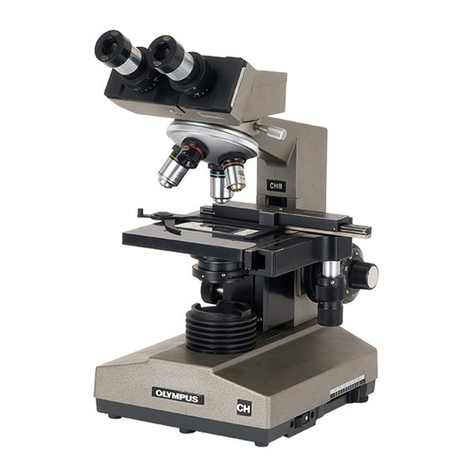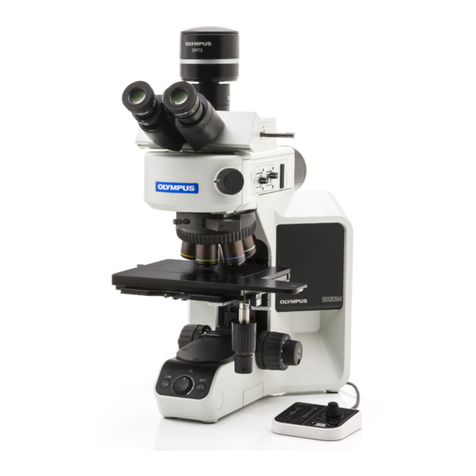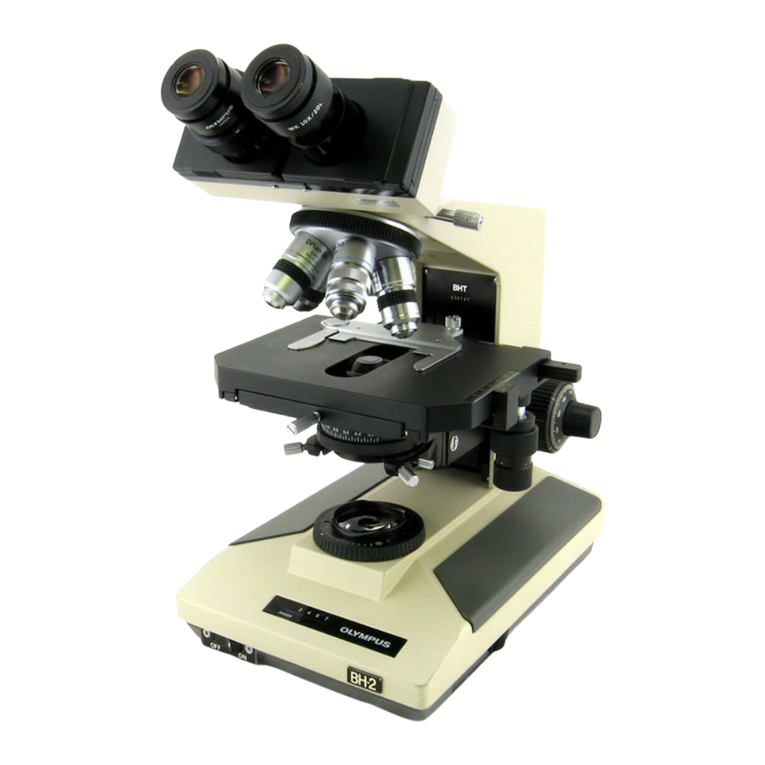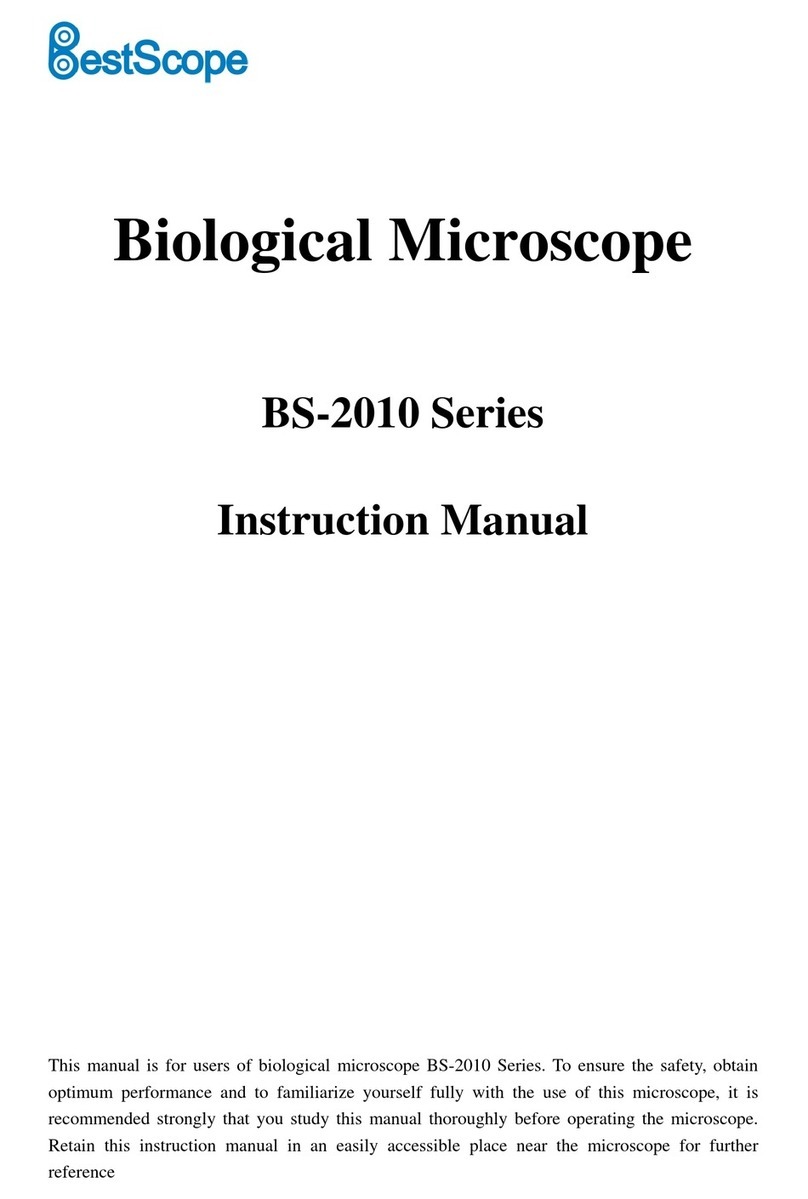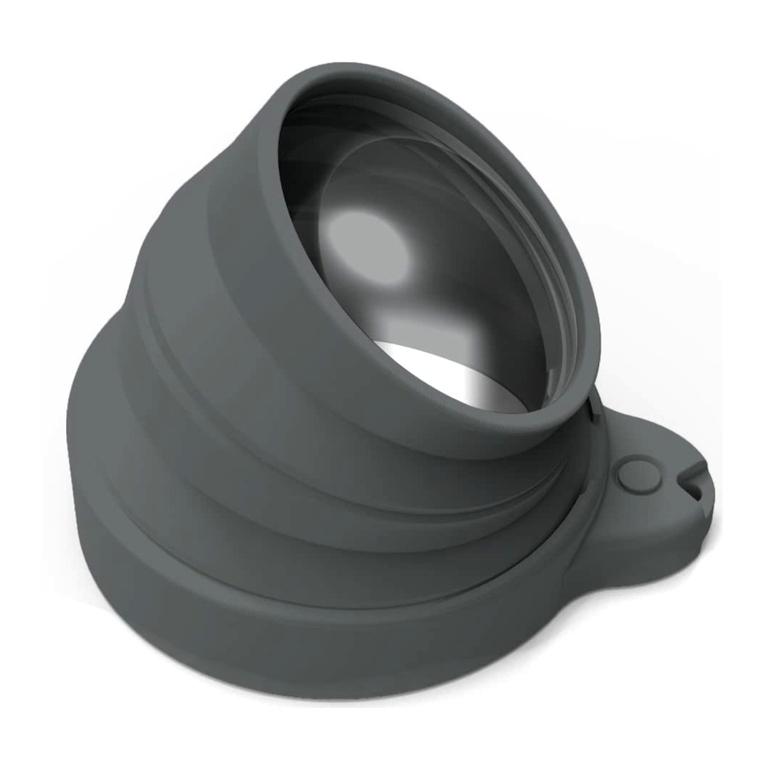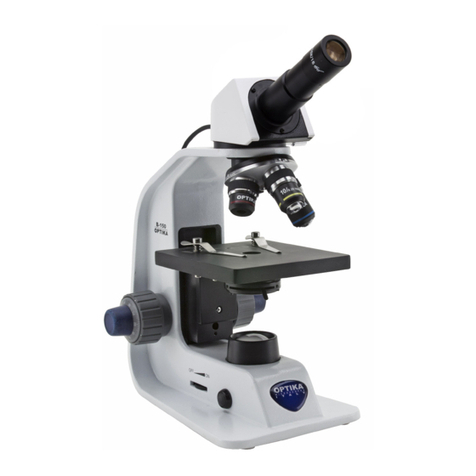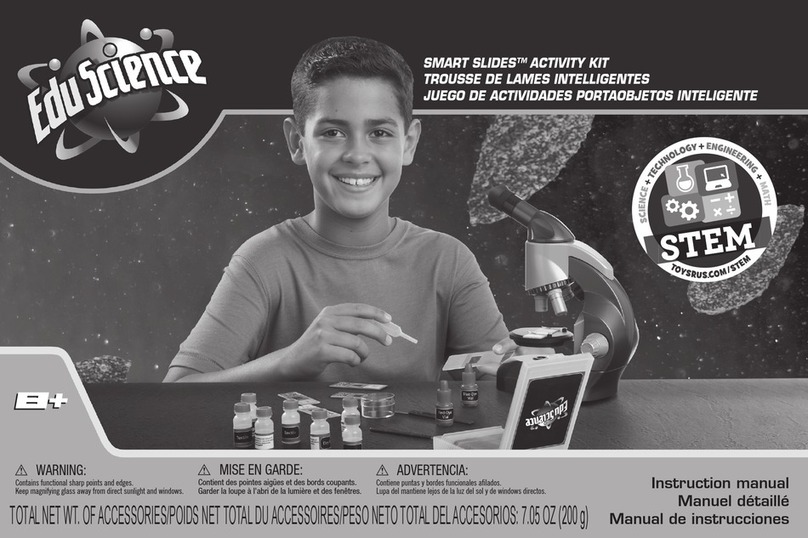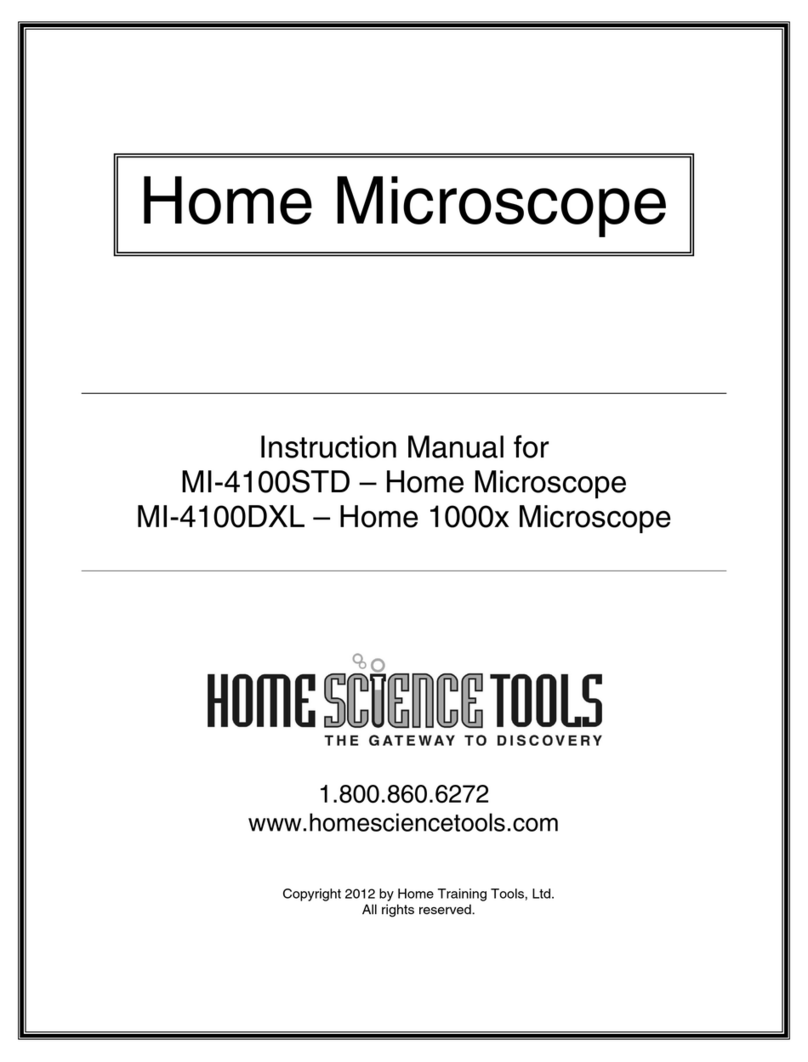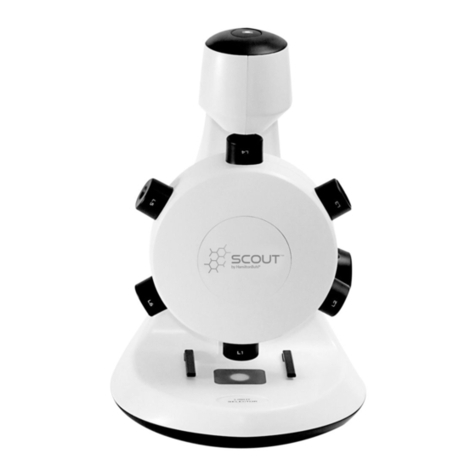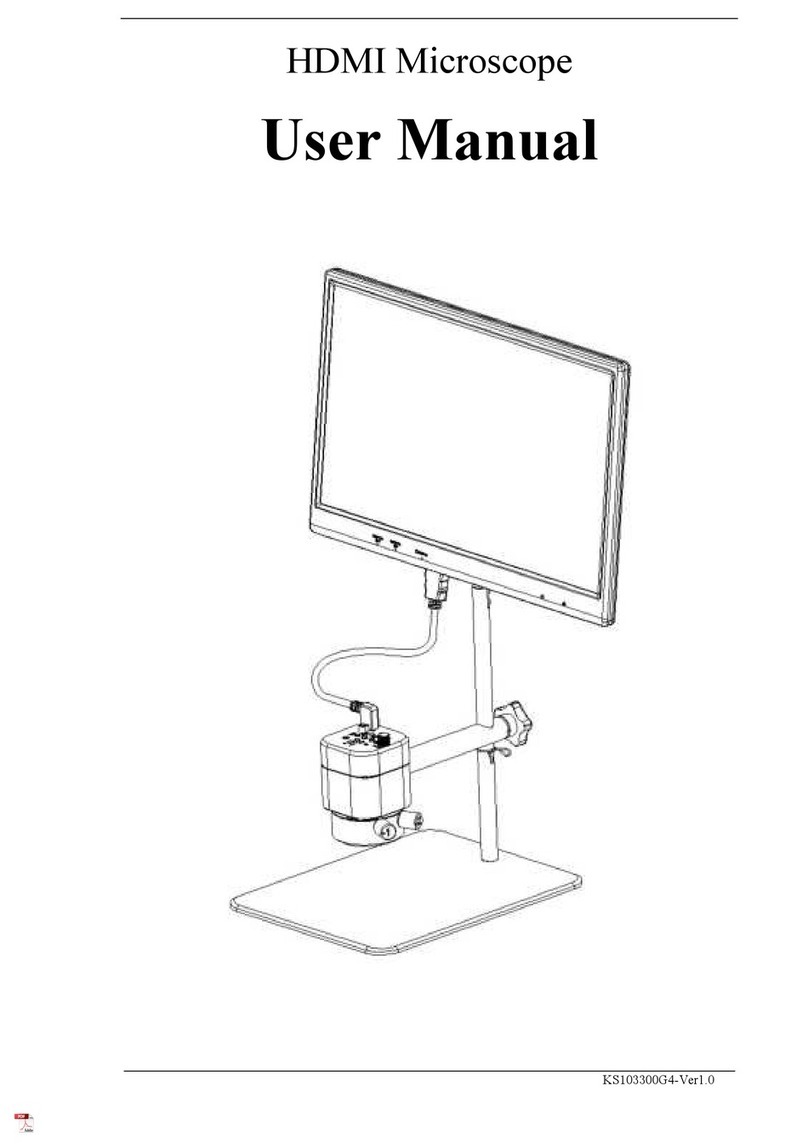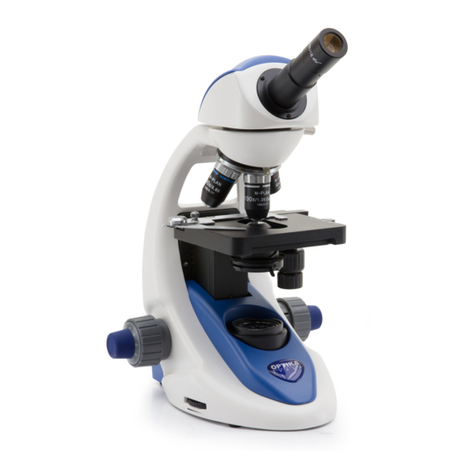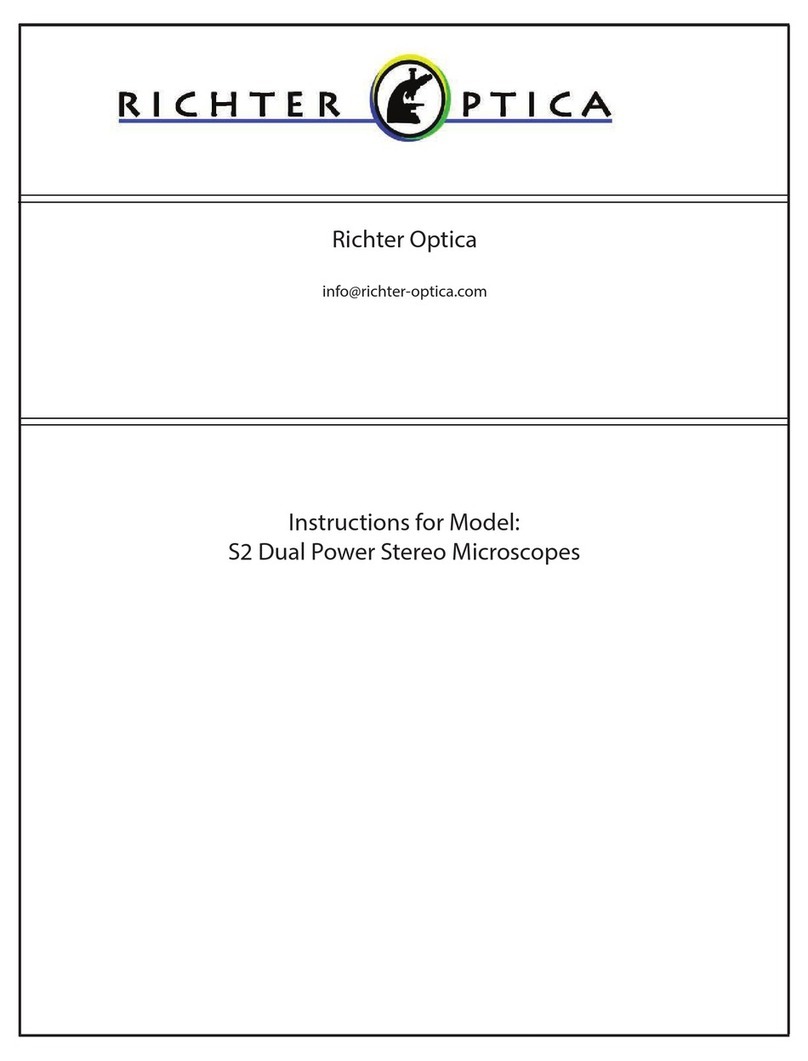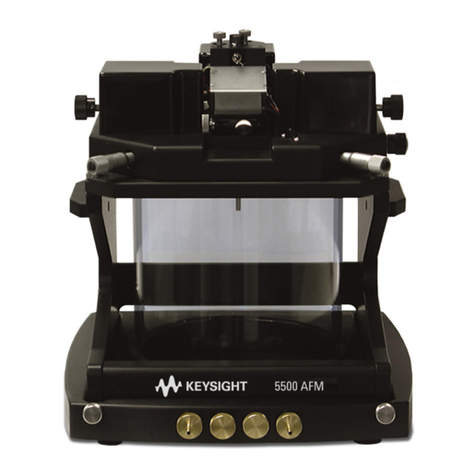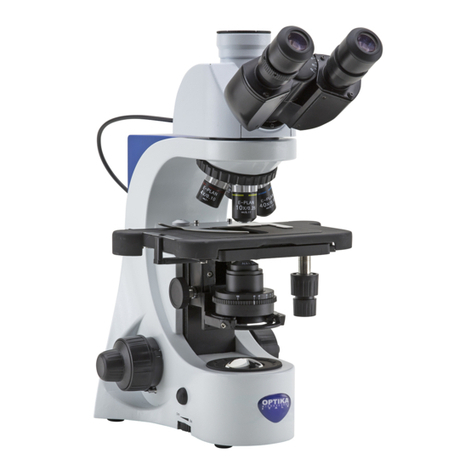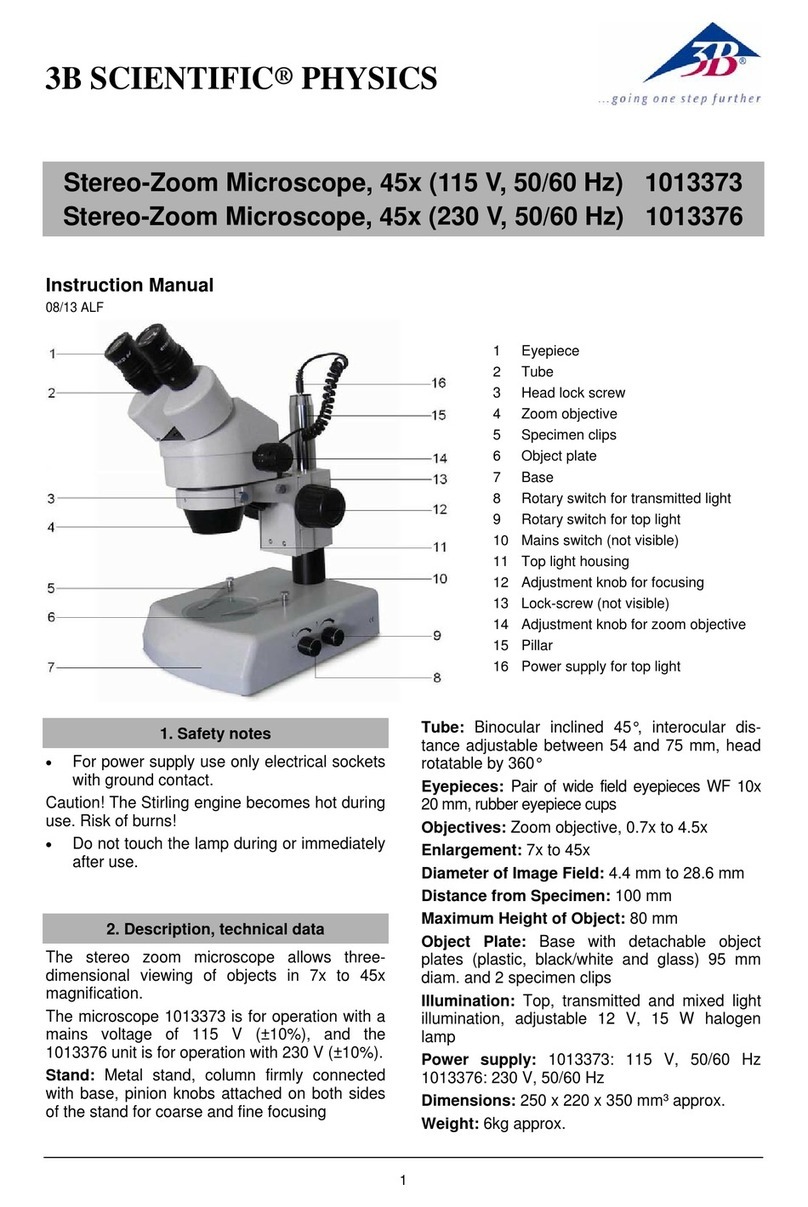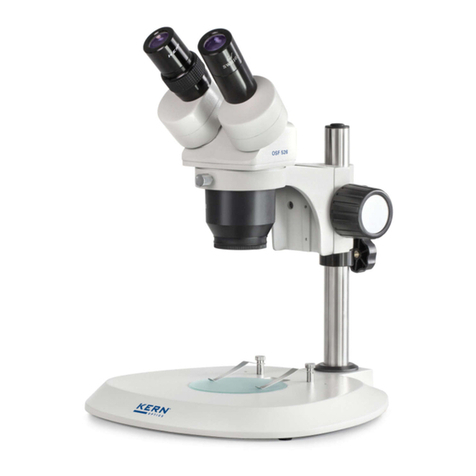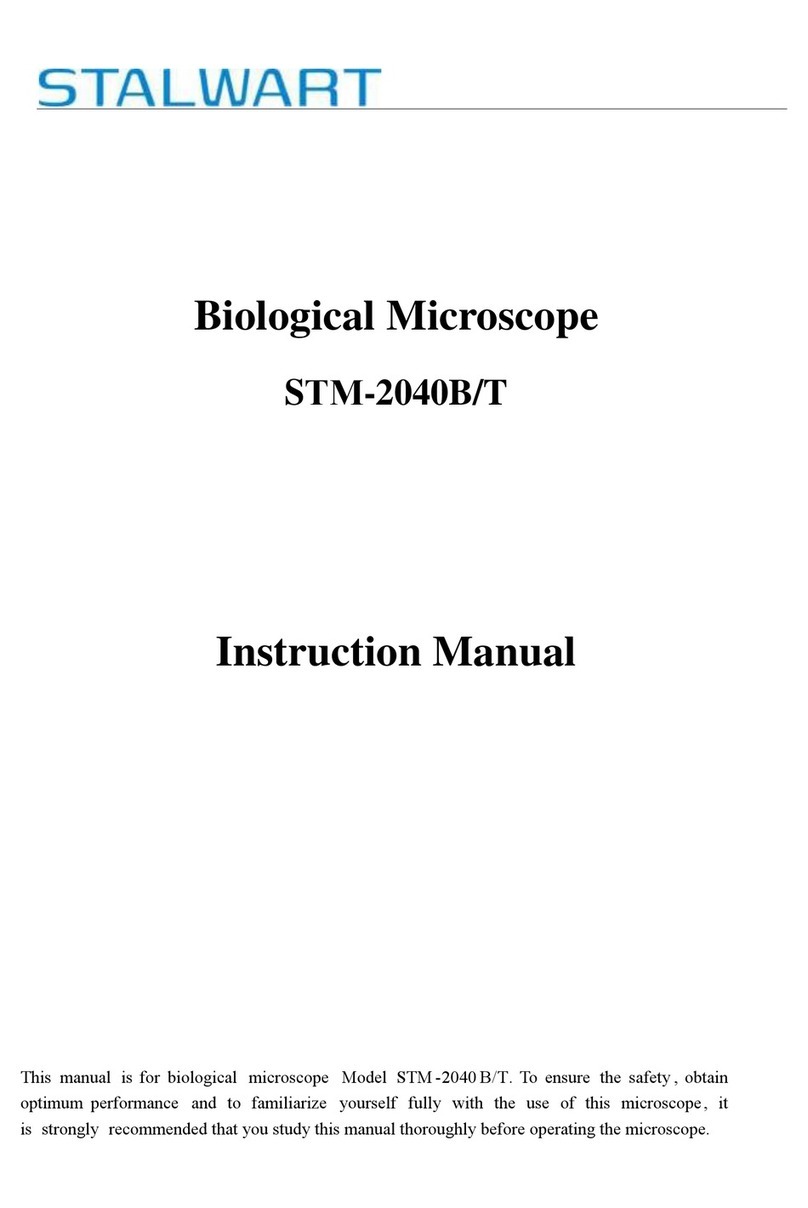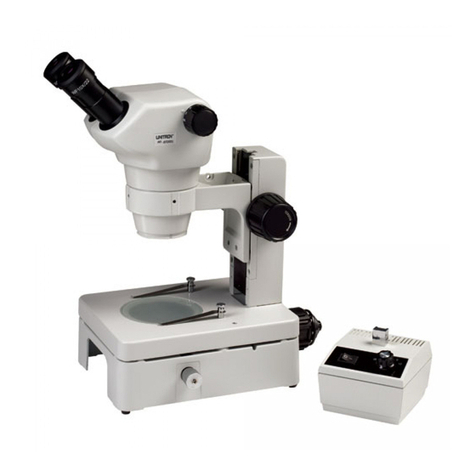16
SIMULTANEOUS FLUORESCENCE OBSERVATIONS
}By properly combining equipment, this system can be used in transmitted light brightfield observation, transmitted phase
contrast observation and transmitted light DIC observation in addition to the reflected fluorescence observation. With
specimens that fade rapidly, fading can be minimized by initially using transmitted light phase contrast or transmitted light
DIC observation for positioning. Reflected fluorescence observation can also be executed simultaneously with phase
contrast or DIC observation, making it easy to tell which portion of the specimen is fluorescing.
1Simultaneous Reflected Fluorescence and Phase Contrast Observations
The phase contrast observation requires a phase contrast condenser (U-PCD2) or a universal condenser (U-UCD8) and
a Ph objective.
1. Engage a dummy mirror unit (or an empty position on the turret) in the light path.
2. Rotate the phase contrast turret to show the same number as the Ph number shown on the objective.
3. Adjust the optical axis between the ring sit and phase plate by centering them.
4. Engage the mirror unit corresponding to the desired excitation into the light path and open the shutter.
5. Adjust the transmitted light for the best balance of fluorescence and phase contrast brightness, and you are ready for
observation.
}Use ND filters or the light intensity control lever on the microscope base to adjust the transmitted light intensity.
}For details on using phase contrast observation, refer to the instruction manual provided with the phase contrast con-
denser or universal condenser.
Simultaneous Reflected Fluorescence and Transmitted Light Nomarski Differential
Interference Contrast (DIC) Observations
The transmitted light Nomarski DIC observation requires the following accessories; 1) universal condenser (U-UCD8); 2)
transmitted light DIC slider (U-DICT, U-DICTS, U-DICTHR or U-DICTHC); 2) analyzer (U-AN or U-AN360-3); 6- or 7-position
revolving nosepiece for DIC (U-D6RE or U-D7RE).
}In order for reflected fluorescence to be effective in the simultaneous observation, insert the analyzer (U-AN or U-AN360-
3) into the analyzer inlet slot above the dichroic mirror on the illuminator.
Do not insert the U-ANT analyzer in the transmitted light DIC slider, for this will dim the fluorescence observation image
and cause the analyzer to be burnt.
1. Engage the dummy mirror unit (or an empty position on the turret) in the light path.
2. Adjust the polarizer on the universal condenser to the “crossed Nicol” (complete extinction) status.
3. Insert the transmitted light DIC slider into the position provided on the nosepiece.
4. Rotate the turret on the universal condenser to select the Nomarski prism matching the objective to be used for observa-
tion.
5. Engage the objective to be used in the light path.
6. Place the specimen on the stage and focus on the specimen.
7. Adjust the field iris diaphragm of the transmitted light illumination unit (built into the microscope base) and the aperture iris
diaphragm of the universal condenser.
8. Turn the prism movement knob on the transmitted light DIC slider to adjust contrast of the DIC image.
9. Engage the mirror unit corresponding to the desired excitation in the light path and opent the shutter.
Adjust the transmitted light for optimum fluorescence and DIC image brightness.
}For details on the transmitted light DIC observation, refer to the instruction manual provided with the U-UCD8 transmitted
light universal condenser.
2
10.
Notes
}We recommend the use of the highly wear-resistant U-ANH analyzer-slider instead of the U-AN analyzer when you are
frequently switching between reflected fluorescence observation and transmitted light Nomarski DIC observation and
need to use both observations simultaneously.
}However, if you are frequency switching between reflected fluorescence observation and transmitted light Nomarski DIC
observation but you do not need to use both simultaneously, then it will be more convenient for you to use the M-DICT3
DIC mirror unit instead of an analyzer (U-AN or U-ANH). This facilitates the switching operation because the analyzer
simultaneously enters the light path when the fluorescence mirror unit is switched to the DIC mirror unit.




















